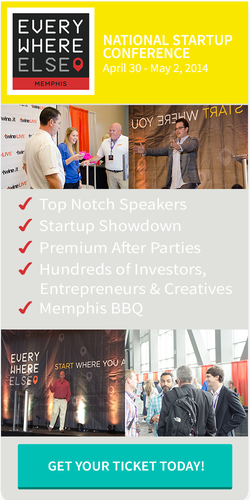Older, more established companies have the flexibility of deciding how to allocate their budgets and spend their available funds on the resources that make their
 businesses more comfortable and easier to run. But as a young startup, you have no such luxury! Because it’s important to make every dollar count while your business
businesses more comfortable and easier to run. But as a young startup, you have no such luxury! Because it’s important to make every dollar count while your business
is still growing, you’ll want to take a look at the following seven opportunities to save money on common business expenses:
Expense #1 – Office Space
First of all, with many of today’s alternative office space options, it’s entirely unnecessary to run out and sign a
But if you absolutely must have a traditional office for your startup, contact property management companies in your area and ask to see non-traditional spaces or spaces that the agencies have had trouble renting out. With a little negotiation, you may be able to save big on spaces that would otherwise remain empty.commercial lease to house your startup. Instead, look into incubator spaces, co-working offices and executive office rentals – all of which can provide you with flexible office space options at a much lower cost.
Expense #2 – Office Furniture
One word: Ikea.
Although, more seriously, if the world’s leading producer of cheap furniture doesn’t appeal to you, consider seeking out used or consignment furniture stores in your area, hitting up garage sales for discount items or even pulling the extra furniture out of your parents’ basement. When your startup is first growing, all you need is some place to sit and work – it doesn’t have to be pretty!
When it comes to purchasing the necessary office supplies for your growing startup, the lesson here is that the best offense is a good defense. Instead of looking for ways to save money on the supplies you think you need, focus instead on eliminating the need for physical supplies. As an example, if you pursue a “paper free” office, you remove the need for paper clips, staplers, staples, hanging files and a host of other associated products.
If you absolutely must purchase some supplies, try cashing in some credit card reward points to fund these expenditures. It’s an easy, creative way to free up the extra funds needed to purchase your must-have office supplies.
Expense #4 – Shipping Expenses
While there’s no way to eliminate postage fees (if your startup ships out a physical product), you can cut back on the cost of packaging products by reusing boxes, picking up free shipping containers from USPS or even collecting serviceable packing materials from other businesses in your area (grocery stores, in particular, get rid of sturdy boxes every day).
And, when it comes to the actual postage fees you pay to ship your products, be sure to shop around to get the best rates. Yes, you’ll wind up paying something, but you might be surprised by the variability in rates that exists between today’s major shipping carriers.
Expense #5 – Employee Costs
The hiring and training of employees typically represents a startup’s largest expense. As such, take the following steps to minimize unnecessary expenditures in this area:
- Consider bringing on new employees as independent contractors. This will minimize your tax burden and give you more flexibility regarding the costs associated with terminating employees who don’t work out.
- Invest in improving your interview process. Training a new employee, only to have him or her leave down the road due to a bad fit, represents a tremendous cost to startups in terms of lost productivity. You can reduce this fiscal waste by enhancing your hiring process so that you’re more likely to wind up with suitable candidates.
- Offer benefit reimbursements – not benefit plans. Although providing employment benefits will help you to attract better employment candidates, it isn’t cheap to set up group health plans or other benefits packages. As a cost-saving alternative, consider offering employees a set monthly reimbursement for benefits that they purchase on their own.
Expense #6 – Advertising
Established companies can run pay-per-click (PPC) advertising campaigns, run TV spots during popular programs and send out highly-effective direct mail pieces. You probably can’t.
Minimize your advertising expenses by taking advantage of “free” (as in, free outside of your time investment) techniques like SEO, content marketing or social media marketing. It’s possible to generate a significant amount of traction in this way, which can drive the sales volume needed to make traditional paid advertising methods a possibility in your business’s future.
Expense #7 – Professional Fees
One last expense that you’ll likely encounter as a startup is professional fees – that is, the amounts that you pay to accountants, lawyers and others for their services.
While you shouldn’t cut them out of your budget entirely, look for opportunities to barter services or products in order to get a discount on your bill. No matter what professional skills you have to offer, you should be able to find the common ground needed to craft an arrangement that benefits both parties, while saving you some serious cash.
Sujan Patel is the founder and CEO of Single Grain, one of the top Digital Marketing agencies in San Francisco, CA. With more than 10 years of Internet marketing experience, Sujan leads the digital marketing strategy for companies like Sales Force, Yahoo, Intuit and many other Fortune 500 caliber companies.
The Young Entrepreneur Council (YEC) is an invite-only organization comprised of the world’s most promising young entrepreneurs. In partnership with Citi, the YEC recently launched #StartupLab, a free virtual mentorship program that helps millions of entrepreneurs start and grow businesses via live video chats, an expert content library and email lessons.














